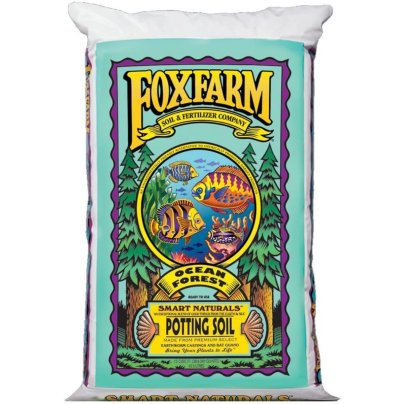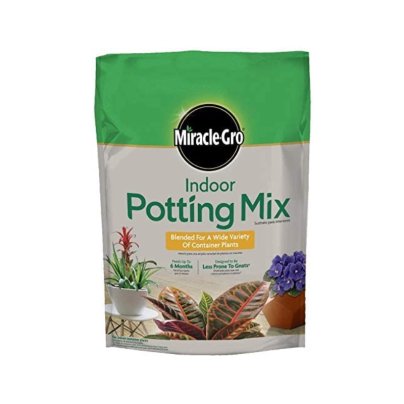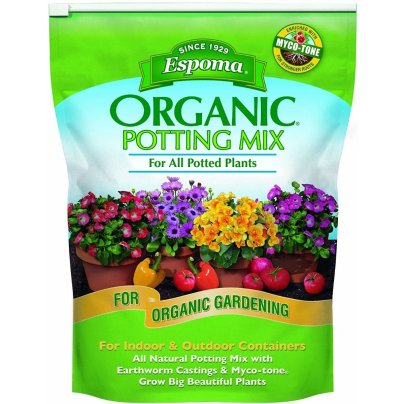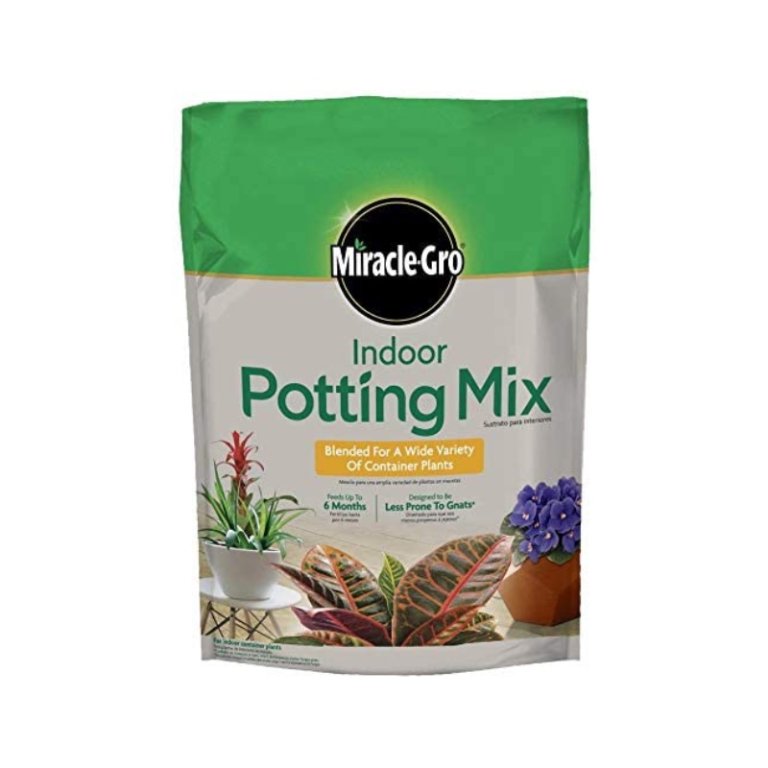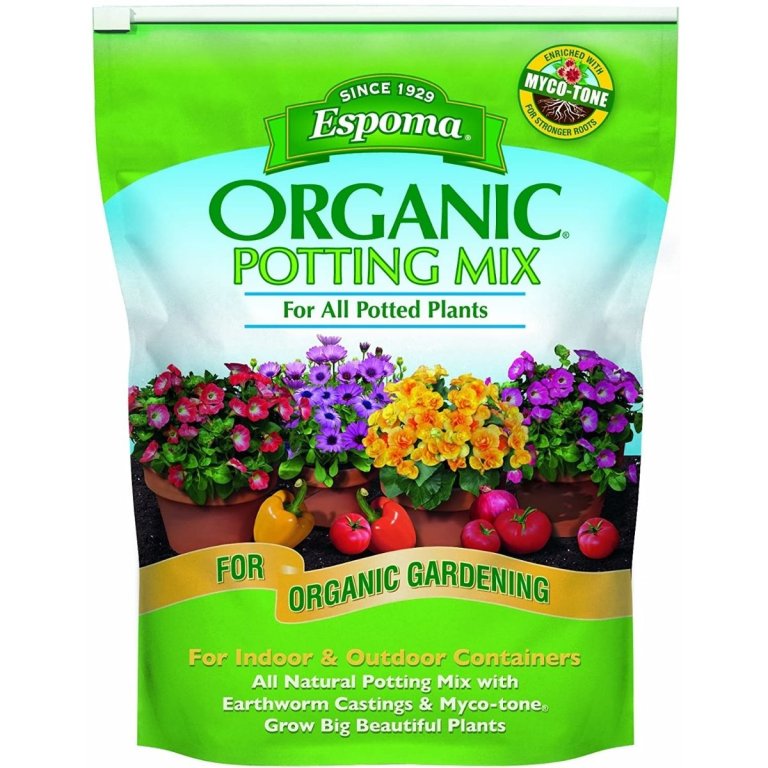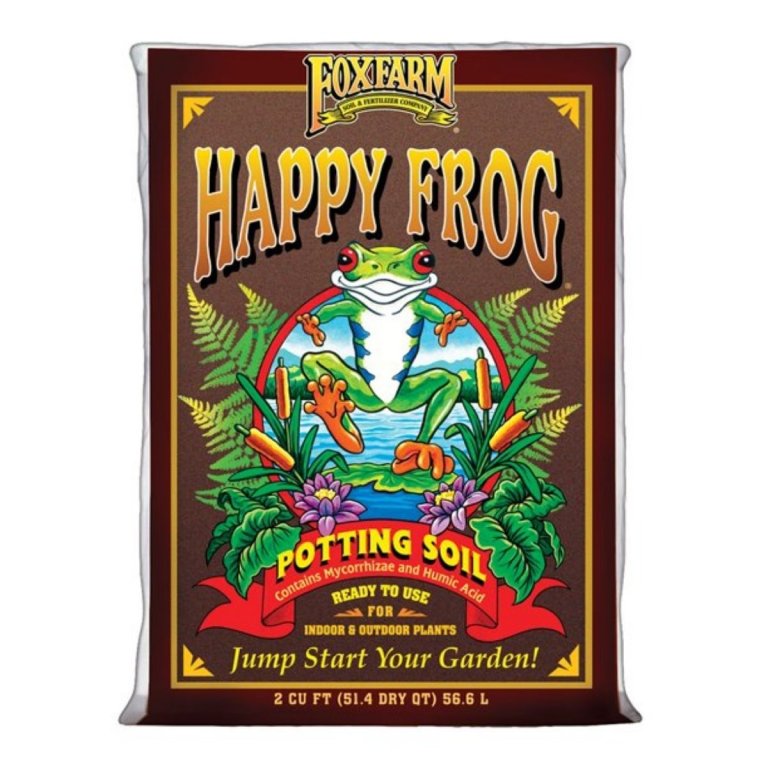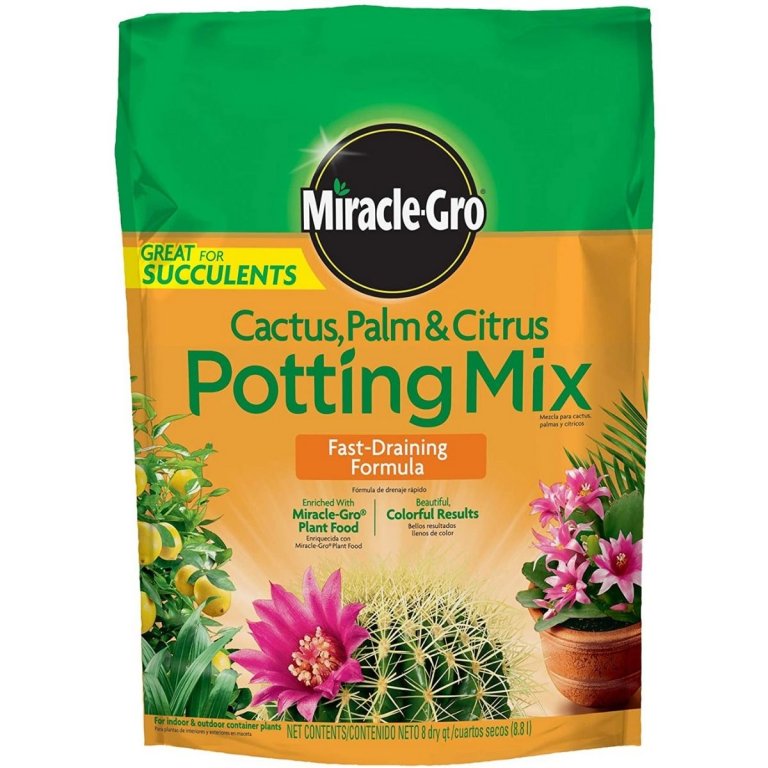
We may earn revenue from the products available on this page and participate in affiliate programs. Learn More ›
The snake plant is sometimes recommended as the perfect plant for gardeners with “brown thumbs” because it’s tough to kill, even if neglected occasionally. However, snake plants can’t reach their full potential if planted in thick, heavy, or soggy soil, so selecting a good quality potting mix is essential.
Fortunately, several high-quality potting soil mixes are available that contain the ingredients necessary for a snake plant to stay healthy and attractive. Ahead, learn what to look for when shopping for potting soil, discover growing tips, and find out why the following mixes provide the best soil for snake plants.
- BEST OVERALL: FoxFarm Ocean Forest Organic Potting Soil
- RUNNER-UP: Miracle-Gro Indoor Potting Mix
- BEST MOISTURE RETENTION: Espoma AP8 8-Quart Organic Potting Mix
- BEST ORGANIC: Fox Farm Happy Frog Organic Potting Soil Mix
- BEST DRAINAGE: Miracle-Gro Cactus, Palm & Citrus Potting Mix 8 Qt.

What to Consider When Choosing the Best Soil for Snake Plants
A snake plant prefers a light loamy soil that not only drains well but also registers between 5.5 to 7.0 on the pH scale. Instead of scooping up dirt from an outdoor garden bed or yard, which can become compacted or contain insects or bacteria, choose a sterile commercial potting soil that’s free of pests and disease.
Types of Soil for Snake Plants
Snake plants can tolerate a range of potting soil mixes, and they aren’t too picky about fertilizer; in fact, they can tolerate synthetic fertilizers as well as organic. While several varieties of snake plant exist, growers are unlikely to find a potting mix labeled specifically for the plant. Instead, look for an all-purpose indoor potting soil mix that matches or meets the following requirements.
NPK Ratio
The snake plant prefers a balanced ratio of nitrogen, phosphorus, and potassium (NPK) such as 10-10-10, but it will tolerate slightly different ratios. The soil mix may have a predetermined NPK ratio, but the user can adjust the NPK ratio by fertilizing with a balanced fertilizer.
Don’t worry about buying a growing mix that contains a perfectly balanced NPK ratio; over time, the plant will absorb the nutrients and deplete them. Moreover, some nutrient content typically drains out of the soil when the plant is watered. It’s OK to select a potting soil with a different NPK. Just make sure the product is an all-purpose indoor potting soil, and the snake plant should be just fine.
Nutrients and Micronutrients
In addition to the three primary NPK nutrients, a snake plant benefits from traces of micronutrients in the soil, including boron, manganese, zinc, and copper, which are often naturally part of organic potting soil mixes. Alternatively, they can be added to the soil when the gardener fertilizes the plant, which should be about twice a year during the strongest growth season (usually spring and summer).
Since it needs only a tiny bit of micronutrients, it’s best to feed the snake plant with a balanced houseplant fertilizer that contains added micronutrients. However, if the potting soil comes with a fertilizer, wait 6 months before fertilizing for the first time.
Bark Compost
Often naturally high in organic nutrients, soil mixes that contain composted bark are lightweight and drain quickly. Snake plants tolerate a wide range of soil characteristics, but, like many indoor plants, it thrives when the soil is slightly moist but not soggy.
Composted bark, which is often sourced from pine bark, resists compaction yet retains a small amount of moisture after watering. The inclusion of composted bark in a growing mix not only gives the plants’ roots ample room to grow, but it also encourages air circulation at the root level and keeps the soil from drying out quickly.
Natural/Organic Ingredients
Unless they’re 100 percent perlite (a type of volcanic glass) or vermiculite (a kind of silica), most growing mixes mainly comprise natural ingredients. These include but are not limited to sphagnum peat moss and compost. Still, natural ingredients and qualifying as organic are two different things.
Organic potting and growing mixes contain ingredients sourced only from chemical-free, natural sources, and they contain no synthetic components. Many gardeners prefer an organic potting mix because it has a greater chance of being sustainably produced, and its ingredients typically were processed in an environmentally friendly manner. However, non-organic mixes can produce healthy snake plants, too.
Coconut Coir
Coconut coir, the fibrous husk harvested from coconuts, is a common component in soil mixes, and it’s well suited for growing a snake plant. Coconut coir won’t compact, so it helps aerate the grow mix. Moreover, it drains well and swells when the plant is watered, gradually releasing the moisture, which allows the grower to water less often.
The fiber is biodegradable, and adding coconut coir to the mix helps improve the soil’s quality as it slowly degrades. By itself, coconut coir doesn’t offer the nutrients necessary for growing snake plants, but in combination with other components, such as peat moss, composted bark, and perlite, it can be a valuable component in the potting soil.
Drainage Layer
Providing adequate drainage is essential when growing most indoor plants, including snake plants. While using the right soil mix can help, creating a suitable drainage layer is also important. Select a pot with drainage holes and add a layer of clean gravel (1 to 2 inches) to the bottom of the pot before potting the snake plant. The drainage layer ensures that holes in the bottom of the pot will not become clogged, which can keep the soil soggy.
For the best results, select a pot with a saucer that will collect the water that runs out of the holes when watering. After no more water is draining out of the pot (usually in about 15 minutes), dump the saucer and replace the pot.
Our Top Picks
To qualify as a top soil pick for growing snake plants, a potting mix should be made specifically for indoor houseplants. It should drain well, resist compaction, and retain some moisture to keep the roots damp between waterings. It should also have a pH range between 5.5 to 7.0. The mix can be organic or non-organic, but it must be free from pests and disease. The following picks are among the best potting soils for growing snake plants.
Best Overall
FoxFarm Ocean Forest Organic Potting Soil
Pros
- Pre-moistened—no need to soak
- Lightweight and drains well
- All organic ingredients
Cons
- On the pricey side
Product Specs
- Base mix: Sphagnum peat moss, forest humus, sandy loam
- pH level: 6.3 to 6.5
- Organic: Yes
Grow a vibrant snake plant with FoxFarm Ocean Forest Organic Soil Mix that gets its lightness from natural sphagnum peat moss. Other organic ingredients include earthworm castings, bat guano, and fish and crab meal. The mix also contains forest humus and sandy loam. All ingredients in the blend are sourced organically, and it contains no synthetic components.
Ocean Forest’s pH level is between 6.3 and 6.5, which is in the middle of the range for growing snake plants. It comes pre-moistened and ready to use right out of the bag.
Runner-Up
Miracle-Gro Indoor Potting Mix
Pros
- Lightweight mix
- Drains well
- Fertilizer added
- Reduces risk of gnat infestations
Cons
- Product is not organic
Product Specs
- Base mix: Sphagnum peat moss, coir, perlite
- pH level: 5.5 to 6.2
- Organic: No
From a manufacturer renowned for its gardening products, Miracle-Gro Indoor Potting Mix is a blend of lightweight ingredients, including sphagnum peat moss, coconut coir, and perlite. It drains well yet retains the moisture necessary for snake plants to thrive.
Miracle-Gro is specifically formulated to reduce the risk of gnats, and it contains a mild .25-.13-.19 NPK fertilizer ratio to help new snake plants get off to a healthy start. The added fertilizer is designed to be slow release, so the grower need not fertilize the snake plant for up to 6 months. This Miracle-Gro indoor potting soil is not completely organic, although it contains mostly natural ingredients.
Best Moisture Retention
Espoma AP8 8-Quart Organic Potting Mix
Pros
- Lightweight and won’t compact
- Drains well yet retains moisture
- Contains all-organic components
Cons
- Myco-tone ingredients not listed
- pH within range but leaning toward alkaline
Product Specs
- Base mix: Sphagnum peat moss, perlite, alfalfa meal
- pH level: 6.5
- Organic: Yes
Espoma Organic Potting Mix gets its lightweight consistency from its mixture of sphagnum peat moss, perlite, and alfalfa meal. It drains quickly, making it well suited for growing snake plants. The difference between Espoma and competing soil mixes is that Espoma contains myco-tone—a proprietary blend of mushroom-like ingredients. Myco-tone absorbs water without compacting and releases it slowly, so the plant’s roots still have a source of moisture when the top of the soil is dry.
Espoma features a pH level of about 6.5, and it contains additional organic ingredients, including yucca extract and earthworm castings, which contribute to healthy, robust plant growth.
Best Organic
Fox Farm Happy Frog Organic Potting Soil Mix
Pros
- High level of organic nutrients
- Lightweight and drains well
- Organic
Cons
- On the pricey side
Product Specs
- Base mix: Sphagnum peat moss, forest humus, sandy loam
- pH level: 6.5
- Organic: Yes
Fox Farm’s Happy Frog Organic Indoor Mix contains many organic ingredients to keep houseplants healthy and lush. In addition to a natural base mix of sphagnum peat moss, forest humus, and sandy loam, Happy Frog contains soil microbes that encourage strong root development and improve the plant’s nutrient uptake. Added ingredients include bat guano, earthworm castings, and aged forest products, in addition to mycorrhizae fungi to enhance root development.
The Happy Frog mix also contains humic acids formed during natural biodegradation and ground oyster shells and dolomitic lime that keep the pH adjusted to around 6.5.
Best Drainage
Miracle-Gro Cactus, Palm & Citrus Potting Mix 8 Qt.
Pros
- Drains well
- Reduces risk of “wet feet”
- Contains fertilizer
Cons
- Not 100 percent organic
- Within pH range, but leans toward acidic
Product Specs
- Base mix: Sphagnum peat moss, forest products, sand, perlite
- pH level: 5.5 to 6.2
- Organic: No
For those who tend to overwater houseplants, this Miracle-Gro Cactus, Palm & Citrus Potting Mix is an excellent soil to use. While this mix is designed for use with cactus and other succulents that require well-draining soil, it’s also a top pick for snake plants that don’t like wet feet.
Forest products, peat moss, sand, and perlite combine to create a soil that won’t bog down. Water drains right through the mix, yet the perlite absorbs and holds some dampness and slowly releases it to the snake plant roots. The mix contains Miracle-Gro plant fertilizer in a 6-2-4 NPK ratio, which ranges from about 5.5 to 6.2 on the pH scale.
Our Verdict
Growing a snake plant is relatively simple, and, in fact, the plant is reputed to tolerate some neglect. However, the best soil for snake plants can make the difference between the plant simply surviving—or thriving. While several soil mixes suffice, two stand out in this lineup. FoxFarm’s Ocean Forest Mix, the “Best Overall” pick, drains well and contains a highly nutritive base. Miracle-Gro Indoor Potting Mix is prized for its light composition and integrated resistance to gnat infestations.
How We Chose the Best Soil for Snake Plants
We extensively researched dozens of types of potting soil and grow mix before choosing the top picks in this lineup. For a soil product to make the cut, it had to drain well yet retain enough dampness to give the snake plant’s roots a little moisture in the event the grower misses a watering.
In addition, we looked for potting soil that was free from harsh chemicals and that contained most or all-organic ingredients. We looked only at soils that resisted compaction because snake plants don’t like heavy, compacted soil.
We didn’t judge the soil as to whether it includes fertilizer, although we noted that it helps get the plants off to a good start. Fertilizer can (and should) be added later, so the exclusion of fertilizer in the mix was not an excluding factor.
The Advantages of Using the Best Soil for Snake Plants
When plants grow in an optimal medium, they thrive, which, for snake plants, means soil that is lightweight, drains well, and contains natural ingredients. Avoid the temptation to fill a pot with dirt from a garden or outdoor raised bed. Snake plants develop the tallest leaf spikes with the richest colors when planted in quality soil. The best soil for snake plants:
- Drains well, so the roots don’t have “wet feet”
- Remains loose and light to allow roots to develop
- Helps protect the plant even if you forget to water occasionally
Tips for Using the Best Soil for Snake Plants
Once the snake plant is in optimal soil, it’s also crucial to use good indoor potting and growing methods to get the plant off to a good start and keep it healthy.
- Select a pot at least 2 inches in diameter larger than the snake plant’s root ball.
- Create a drainage layer of clean gravel at the bottom of the pot to help keep the drainage holes free from clogs.
- Fill the pot two-thirds of the way with the soil, add the plant, and then fill in around the sides of the root ball with more soil.
- Water from the tap can leave salt deposits in soil that can slow the snake plant’s growth, so consider repotting and refreshing the soil every 3 to 4 years.
FAQs
Growing a snake plant is an easy way to add a splash of greenery to the home. While this plant tolerates a range of pH and moisture levels, it thrives if it’s planted in optimal soil. Newbie indoor gardeners may have a few questions.
Q. Can I use cactus soil for snake plants?
Yes. Potting soil designed for use with cactus or other succulents drains well and is suitable for snake plants.
Q. What NPK ratio do I need for a snake plant?
In general, a balanced fertilizer, such as 10-10-10 NPK, is best for snake plants, but slight variations are also acceptable. Just look for an all-purpose indoor houseplant fertilizer.
Q. How do I properly prepare the soil for a snake plant?
The best way is to first add a layer of gravel or small rocks to the bottom of the pot and then add the soil. Some organic soils come in a dry, expandable form, and in that case, add water to the soil while it’s in a large bowl. After it absorbs the water, put the soil in the pot and plant the snake plant.
Q. Do snake plants like coffee grounds?
Coffee grounds are acidic and will lower the pH of the soil. For the best results, use a pH tester. If the pH is at or near 7, treat the snake plant to an occasional cup of cold coffee rather than adding coffee grounds.
Q. Can I use regular potting soil for snake plants?
As long as the potting soil is designed for indoor plants and drains well, snake plants will probably like it. Avoid outdoor soil and potting soils that have been opened and left open longer than a few months. Standing in an open container increases the risk of insects and disease.
